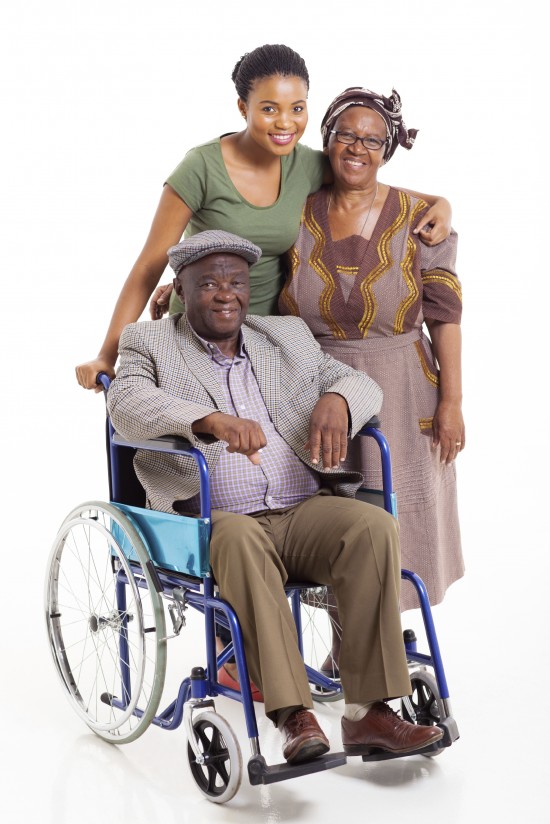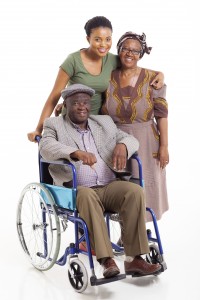Category: Engaging with families
Posted by Dr. El - May 27, 2015 - Dementia, Engaging with families, McKnight's Long-Term Care News, Resident care, Role of psychologists

Here’s my latest article on McKnight’s Long-Term Care News:

A recent Iowa court case acquitted Henry Rayhons of sexually abusing his wife, who had Alzheimer’s dementia and lived in a nursing home. The case not only prompted national debate, it led those in long-term care to consider how to handle sexual activity within the bounds of their facility, particularly in cases when one or both of the parties have a diagnosis of dementia.
Psychologists are frequently asked to determine whether or not a patient has the capacity to understand or authorize various aspects of care, including their ability to consent to sexual behavior.
Eric Redlener, PhD, president of The PsychAssociates Group, a company that provides psychological services to long-term care facilities, held a meeting for its supervisors to discuss the challenges that arise when considering capacity, sexual activity and the senior living environment.
I was on the conference call since I work for them regularly. Here is a fly-on-the-wall account of the concerns raised during the meeting.
Staff issues
Some of the challenges to handling sexual behavior in the long-term care environment involve the reactions of staff members to the situation.
· Some staff members show squeamishness about “Grandma and Grandpa” having sex.
· Staff members may be concerned, rightly or wrongly, that residents will be taken advantage of.
· Staff members project their notion of sex onto elders. Elders may be content with holding hands or heavy petting, but staff might be anticipating people “swinging from the rafters.”
· Sometimes an administrator or director of nursing bans sexual activity among the residents, considering it “bad behavior,” despite the fact that it’s a legal right in many states for residents to be able to engage in sexual relations within a long-term care facility.
Family concerns
The reaction of family members to the romantic/sexual involvement of their elders can vary greatly.
· Some family members are able to accept their loved one’s need for intimacy, despite its sometimes unexpected expression, such as when an elderly heterosexual mother spends time cuddling with another woman on the floor, or a husband with dementia becomes involved with a woman who is not his wife.
For the entire article, visit:

Posted by Dr. El - May 18, 2015 - Business Strategies, Customer service, Depression/Mental illness/Substance Abuse, Engaging with families, Motivating staff, Talks/Radio shows
Join Dr. El
Wednesday, May 20th
at 2pm Eastern Time (1pm Central Time)
for a
FREE Webinar on
9 Ways to Improve the Effectiveness of your Social Work Department
& Increase LTC Resident Satisfaction
sponsored by EmLogis
To register:
About the webinar:
Are your residents depressed, their families distressed, and your staff turnover rate higher than you’d like? Empower your long term care social service department to lead the way to change! Join LTC expert and psychologist Dr. Eleanor Feldman Barbera for a live webinar on Wednesday, May 20, 2015 at 1pm CDT | 2pm EDT as she discusses the importance of social workers and ways in which an effective department can transform your community.
What you will learn:
The most important factors contributing to resident satisfaction
The impact of social workers upon resident, family and staff satisfaction
9 easy-to-implement strategies to develop your social work department
Who should attend this webcast:
Administrators and assistant administrators
DONs, ADONs, social workers
Staff training coordinators
Human resource department staff

Posted by Dr. El - December 17, 2014 - Customer service, Engaging with families, For Families, Tips for gifts, visits

This post, along with my Planning for the Holidays article, could be printed out and left for family members in a prominent location. Think of it as your gift to every nursing home family.
~Happy Holidays from Dr. El at MyBetterNursingHome.com

With the holiday season upon us, you may be wondering what would make a good present for a relative in a nursing home. In my efforts to banish the barren nursing home room, photos are still my number one pick for holiday gifts, but here are other suggestions (be sure to label everything!):
Nice lotions, soaps, and grooming products
A special bedspread
A “lap” blanket to wear while sitting in a wheelchair
Wheelchair accessories (Google it) like cup holders, side pockets, wheel lights, etc.
Sturdy clothes that can handle being washed in an industrial washing machine
Colorful bangle bracelets to blend in with nursing home wrist bands
My book, The Savvy Resident’s Guide: Everything You Wanted to Know About Your Nursing Home Stay But Were Afraid to Ask
Plants, or potted flowers, especially if you can come by to water them regularly
Great gifts from the heart:
Make a commitment to visit once a week, or once a month
Make a commitment to call once a week, or once a day
Organize friends and family so that each person has a week to call or visit
Bring a home-cooked meal
Organize friends and family to bring a home-cooked meal on a regular basis
Posted by Dr. El - December 11, 2014 - Business Strategies, Customer service, Engaging with families, McKnight's Long-Term Care News

Here’s my latest article on McKnight’s Long-Term Care News:

Jane Gross’ recent post Seeing the ‘Invisible Patient’ in the “New Old Age” blog of the New York Times discusses how professionals often ignore the needs of caregivers of the elderly because they are focused on their identified patient. As the author states, “Not once in the years I cared for my mother did any of her physicians ask me how I was doing.”
While the article centers on the burdens of caregivers in the community, it got me thinking about whether we’re meeting the needs of families whose loved ones are in long-term care.
What are the burdens of family members in LTC?
Some families have been down a long road of illness with their loved one and are physically and emotionally depleted. Others have had the shock of a sudden shift in the condition of their relative and have been swiftly thrust into the world of LTC. Virtually all of the families are coming into a system that’s new for them and they could use our help in successfully navigating this change.
Benefits to the facility
Addressing the needs of family members can:
• Increase the likelihood of families making positive contributions to the lives of the residents, which is good for the residents and reduces the workload of the staff. If families are purchasing clothes, for example, that’s one less task for staff members.
• Improve satisfaction with our services and increase the chances that they’ll recommend our facility to others.
• Provide a benefit that appeals to the adult children decision-makers and makes our organization more competitive.
Below are some ways to creatively and inexpensively attend to the needs of families:
For the entire article, visit:

Posted by Dr. El - November 21, 2014 - Communication, Engaging with families, For Families, Tips for gifts, visits, Videos

With the start of the holiday season, it’s time for this perennial post from Dr. El at mybetternursinghome.com:

‘Twas the Week Before Christmas…
And 83-year old Albertha assured me her family was planning to take her home for the holidays.
“Have you talked to them about it? Have they called the social worker to arrange a pass, and meds, and transportation?”
“No,” she replied, “but they’re coming to get me.”
‘Twas the week after Christmas, and Albertha was glum.
“They didn’t show up. I waited all day, but they didn’t come.”
Albertha spent Christmas day watching other people go out on pass and return, and seeing families arriving with food and gifts and smiles.
Now my patients and I start discussing the holidays a few weeks in advance, addressing wishes and practicalities, phoning families if needed, and getting the social worker involved. We set up a hierarchy of plans.
Plan A: Go home for the day.
Plan B: Go out to a wheelchair accessible restaurant with family.
Plan C: Have visitors come with food and go around the corner for coffee, if possible, just to get out.
Plan D: Stay in with visitors and food.
Plan E: Talk to family members on the telephone, discussing plans for a future visit, while sitting in a room festooned with cards and holiday decorations. Attend the nursing home holiday party.
Plan F: Have a small holiday gathering in the room with nursing home friends after the facility party.
Since then, my people know what to expect from the holidays, even if the expectation is that their family might not arrive as hoped.
Three tips from Dr. El for the holidays (click here or view below): http://youtu.be/8HTjVoKQmKo
Posted by Dr. El - September 16, 2014 - Business Strategies, Communication, Customer service, Engaging with families, McKnight's Long-Term Care News

Here’s my latest article on McKnight’s Long-Term Care News:

I listened with great interest last week to McKnight’s Fall Expo talk on Pain relief: Dealing with difficult family and resident situations. Attorney Matthew J. Murer provided excellent information on how to work with families to prevent conflicts over treatment and other care issues.
Here, from a psychological perspective, are some additional ideas to prevent or reduce disagreements over care, thereby decreasing the likelihood that the situation will result in legal action.
1. Create systems that easily allow family members to be part of the treatment team.
We collect initial data from families upon admission, but there’s often more family members can and want to add to care.
Staff members may have difficulty adequately involving families because it’s not a fluid part of their workflow. Family members tend to visit in the evenings and weekends when the administrative and day shift workers are no longer in the facility, for example, and care plan meetings are held during working hours when many family members aren’t available.
Inviting relatives to meetings via secure video chat, establishing weekend or evening hours for key personnel such as social workers, and implementing a comprehensive communication system that transmits family information between shifts and departments can help.
In addition, staff members should be trained so that they’re genuinely receptive to information provided by loved ones rather than creating the impression that the family is a nuisance. (I’ve seen this!)
2. Educate families about the illnesses of their loved ones.
Many residents are given diagnoses just prior to or upon admission, but receive little information about their conditions. Similarly, family members often struggle to come to terms with new diagnoses and have many time-consuming questions to ask of staff.
They also may look for health information from less-than-reputable resources. Set up a magazine rack in the lobby with information and resources about common illnesses such as diabetes or stroke and/or add a page to your website with helpful links for families. This meets a genuine need, generates more knowledgeable conversations between families and staff, and helps to create more realistic expectations on the part of families regarding treatment and prognosis.
For the entire article, visit:

Posted by Dr. El - June 12, 2014 - Business Strategies, Communication, Customer service, Engaging with families, McKnight's Long-Term Care News, Motivating staff, Resident care

Here’s my latest article on McKnight’s Long-Term Care News:

At the front desk, the workers were having an argument. Some residents watched the proceedings with interest and others with expressions of alarm. A waiting family member shifted from one leg to another and began sighing with exasperation as the loud conversation wore on without her presence being acknowledged.
We may talk about the term “customer service” and ask our staff members to avoid public arguments like the one above, but nevertheless, similar situations happen every day. Why does it matter so much? Using the model of the family as a guide, I discuss the psychological importance of good customer service in all our interactions.
With other staff members – Just as the relationship between parents forms the foundation of a family, our relationships with our coworkers are the foundation of good customer service.
o As shown in the above example, the residents observe how we treat one another. If our conversations are respectful and collegial, residents feel comfortable discussing concerns because they perceive their caregivers to be levelheaded and understanding. Angry, shaming interactions between staff members create an unsafe environment, making residents less likely to share information — including details that may affect medical care.
o Difficult interactions with coworkers are frequently transmitted to resident care. This is known in psychological terms as displacement. In the classic case, the boss yells at the father, who comes home and yells at his wife, who yells at the kid, who kicks the dog. If the nursing supervisor publicly criticizes the nurse who then chastises the aide, the residents are likely to be on the receiving end of the aide’s aggravation. Alternatively, if the nursing supervisor compliments the nurse who in turn praises the aide, the residents are more like to be met with a cheerful, upbeat caregiver.
o How senior staff members talk to subordinates is passed along to the next level of subordinates, not just through displacement, but also through modeling. Senior staffers are showing through example “how we handle things here.” When an administrator uses “teachable moments” to calmly point out what aspects of a crisis were managed well and what could be done differently for mismanaged parts, this becomes its own teachable moment in terms of how to provide constructive feedback.
For the entire article, visit:

Posted by Dr. El - November 14, 2013 - Business Strategies, Customer service, Engaging with families, McKnight's Long-Term Care News

Here’s my latest article on McKnight’s Long-Term Care News:

As the holiday season draws near, more families will be passing through your doors to visit their loved ones at your facility. Out-of-town relatives will be making annual trips and locals will be taking the children to see Grandma during school breaks. This is an ideal time to provide extra services that showcase your high level of care and make the season more pleasant for families and residents.
You’re the experts when it comes to eldercare – most of the families are going through this for the first time. Show your commitment to customer service by giving families the guidance they need to make the most of season.
Here are some ideas:
1. Provide info on planning time with loved ones
Let families know in advance not just about your visiting hours, but also about how to schedule passes home. Which staff members do they need to talk to about taking Grandma out of the facility? What arrangements should they make regarding transportation? Do they need to be giving medication and if so, what kind of training is required and who will be providing it and when?
Write this all down for them and put it on your website or newsletter and/or have an info sheet with holiday information at the front desk. Add an option to your telephone menu with frequently asked questions about visits and passes.
2. Suggest new rituals
People often have difficulty imagining ways to celebrate the holidays other than in the family tradition. They may need your help envisioning possibilities that take into account illness and a long-term care stay. If the family home isn’t wheelchair accessible, families can create new traditions such as enjoying an accessible local restaurant, or they can keep it simple and go out for a manageable coffee and dessert.
If Grandpa isn’t well enough to leave the facility for a celebration, suggest alternatives such as bringing food to him in his room or reserving a common area for an hour. Let families know your dietary staff is available to discuss appropriate foods and that the kitchen staff is ready to reheat leftovers or to puree or chop as needed. Suggest foods that are already pureed or chopped such as mashed potatoes or pureed soups to minimize the feeling of missing out on something.
3. Offer communication tips
For the entire article, visit:

Posted by Dr. El - October 24, 2013 - Dementia, Engaging with families, Resident care

In the long-term care setting, we are often called upon to make difficult decisions on behalf of our elders with dementia. Some choices, such as refusing medical care, necessitate a capacity evaluation by a licensed and trained professional. Other decisions are made every day by staff and family members who desire to allow the resident autonomy yet need to keep them safe.
Today’s post is by clinical bioethicist Viki Kind, MA who discusses the use of the shared decision-making model to help residents with dementia and their families make decisions regarding care.

Viki Kind, MA, KindEthics.com
Many caregivers struggle with knowing when and how much to step in to protect the person in their care. It is especially difficult when the person is in the early stages of Alzheimer’s or dementia. As a clinical bioethicist, I have unique tools and strategies to help family caregivers navigate these difficult situations.
The Shared Decision Making Model is one of the tools I teach in my book, The Caregiver’s Path to Compassionate Decision Making: Making Choices for Those Who Can’t. This tool can be used to determine how much your loved one should participate in his or her important life and health decisions. With this tool, you can adjust this process to fit your loved one’s mental abilities as he or she changes over time. If your loved one has fluctuating capacity, you will need to adjust the age range as your loved one’s condition changes each day.
The Shared Decision Making Model states that we should include people in the decision-making process based on their mental age. Whether you estimate your loved one’s mental age or the doctor has given you an approximate age, your answer will fit into one of the following categories. These age ranges will help guide you as you begin to use the Shared Decision Making Model.
Zero to six years old
Seven to thirteen years old
Fourteen to seventeen years old
The way you figure out what your loved one’s mental age is by thinking about what a child would be allowed to do at different ages. (I am never saying that your loved one is a child, it is just a way to imagine how his or her abilities and needs have changed.) Would you leave the person home alone? Would you let them use a knife to butter their bread? Would the person be able to call 911 if there was a fire? Is the person able to remember enough details in order to make an informed and well thought out decision?
Most family caregivers I know either already have an idea of their person’s mental age or can figure it out when thinking about it in these terms. If you are a professional in a nursing facility, you will be able to evaluate for this as you get to know the resident.
And you don’t have to know exactly because these are age ranges, not absolute rules. You can adjust the age ranges up or down a little bit, but be careful about moving the mental age too much or you might end up using the tool in the wrong way.
Here are the basic guidelines of the Shared Decision Making Model. If the person in your care is in the zero-to-six-year-old age range, you will need to make the decisions for him or her because it wouldn’t be safe for the individual to participate in important decisions. If the person is in the seven-to-thirteen-year-old age range, he or she will be able to have a voice in some decisions but will not make the final decision. If the person is in the fourteen-to-seventeen-year-old age range, the individual may have enough capacity to make his or her own decisions.
The second tool that works with the first tool is the Sliding Scale for Decision Making which reminds us that the more dangerous or consequential the decision, the more mental capacity the person needs to have to be including in the decision making process. You wouldn’t allow someone who is six-years-old mentally to choose which nursing facility is right for him but you might allow someone who is mentally sixteen to make the decision or at least share in the decision-making process.
At the same time, you would allow the person who is mentally six to have the power to decide if he would like which activity he would like to attend because that isn’t a serious or important decision to make. The value of this process is it includes and empowers this person to have some control in their life, even when the more major decisions have been made for him.
With these two tools working together, you can evaluate the seriousness of the situation and if the person’s mental capacity changes, you can adjust how much he should participate in the decision-making process. In the nursing facility setting, these tools can give the professional caregiver the confidence to step in when necessary and to step back when it is not a very serious decision and the resident has enough mental ability to make the decision. Caregivers have told me that these strategies have reduced conflicts and improved patient-centered care.
Decision-Making and Dementia: Conversation with Viki Kind, MA
This 40-minute audio is designed for facilities and staff members wishing to learn more about using the Shared Decision-Making Model to address challenging decisions in the long-term care environment. Listeners will learn:
- Ways facilities can help families make decisions on behalf of their loved ones
- How to balance fall prevention with the resident’s desire to walk
- Ways to make good discharge decisions for residents with dementia
- The qualities of an effective ethics committee
- And more
Instant Download: Only $10.99
 Audio includes 5 FREE helpful decision-making resources!
Audio includes 5 FREE helpful decision-making resources!
Posted by Dr. El - August 22, 2013 - Books/media of note, Engaging with families

I’m pleased to announce that my writing is now being featured at SeniorCare.com! My new column will focus on helping families grapple with eldercare issues. You can find my articles here: Dr. El at Senior Care























